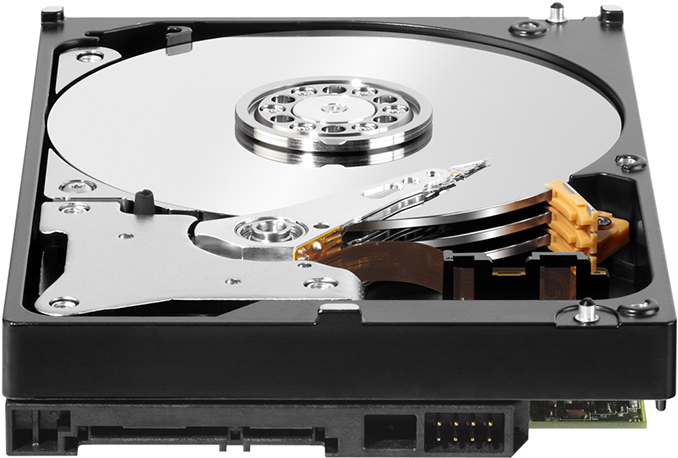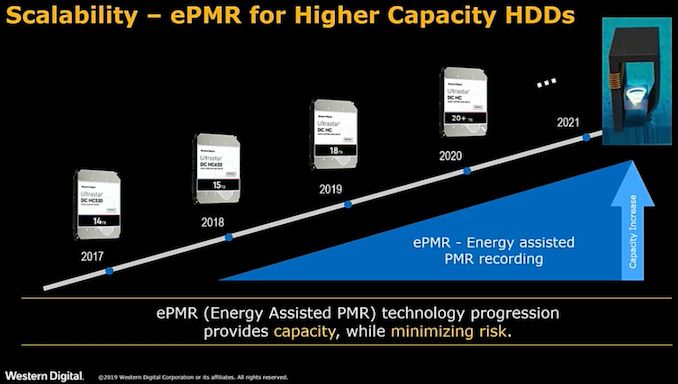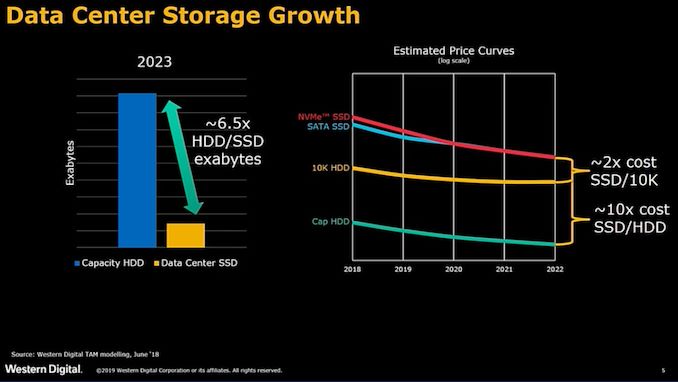Western Digital: Over Half of Data Center HDDs Will Use SMR by 2023
by Anton Shilov on March 19, 2019 10:30 AM EST- Posted in
- HDDs
- Storage
- Western Digital
- SMR
- MAMR

Western Digital said at OCP Global Summit last week that over half of hard drives for data centers will use shingled magnetic recording (SMR) technology in 2023. At present Western Digital is the only supplier of SMR HDDs managed by hosts, but the technology is gaining support by hardware, software, and applications.
SMR technology to boost capacity of hard drives fairly easily but at the cost of some performance trade-offs due to the read-modify-write cycle introduced by shingled tracks. Since operators of datacenters are interested in maximizing their storage capacities, they are inclined to invest in software that can mitigate peculiarities of SMR. As a result, several years after Western Digital introduced its first host-managed SMR HDDs, more and more companies are adopting them. Right now, the vast majority of datacenter hard drives are based on perpendicular magnetic recording technology, but WD states that in four years SMR HDDs will leave PMR drives behind.
Obviously, usage of SMR will not be the only method to increase capacities of hard drives. Energy-assisted PMR technologies (e.g., MAMR, HAMR, etc.) will also be used by Western Digital. In the coming quarters the company intends to release MAMR-based HDDs featuring a 16 TB (ePMR) and 18 TB (eSMR) capacity. The company also plans to introduce 20 TB HDDs in 2020.
High-capacity hard drives are not going to be replaced by high-capacity SSDs any time soon, according to Western Digital. HDDs will continue to cost significantly less than SSDs on per-TB basis. Therefore, they will be used to store 6.5 times more data than datacenter SSDs in 2023.
Related Reading:













33 Comments
View All Comments
mode_13h - Tuesday, March 19, 2019 - link
SMR reminds me of helical scan, for tape. And to that, I say: bring on the flying erase heads!Xajel - Wednesday, March 20, 2019 - link
The thing is, why the higher capacity drives are still expensive? I mean there's a big price gap when you go between 4TB, 6TB, 8TB & 10TB. And the worst thing is external drives are much less expensive than regular internal drives they makes it to look like internal and NAS drives are just overpriced drives.I guess they're intentionally keeping the higher capacity drives that expensive because SSD's at those capacities are still not there yet, I mean maximum mainstream SSD's are just reached 4TB. So when you need more HDD's are the only option you have.
MDD1963 - Tuesday, March 26, 2019 - link
Within the last few weeks when I last checked typical Amazon prices on 4,6,8, and 10 TB drives, the price increases are fairly linear jumping from 4 TB (~$120) to 6 TB ($160-ish), and 8 TB (~$250); however, the prices go up quickly for each 2 TB jump beyond that point.